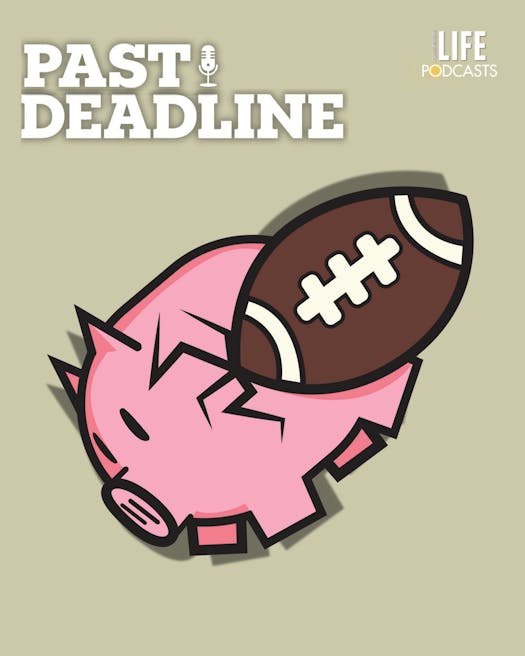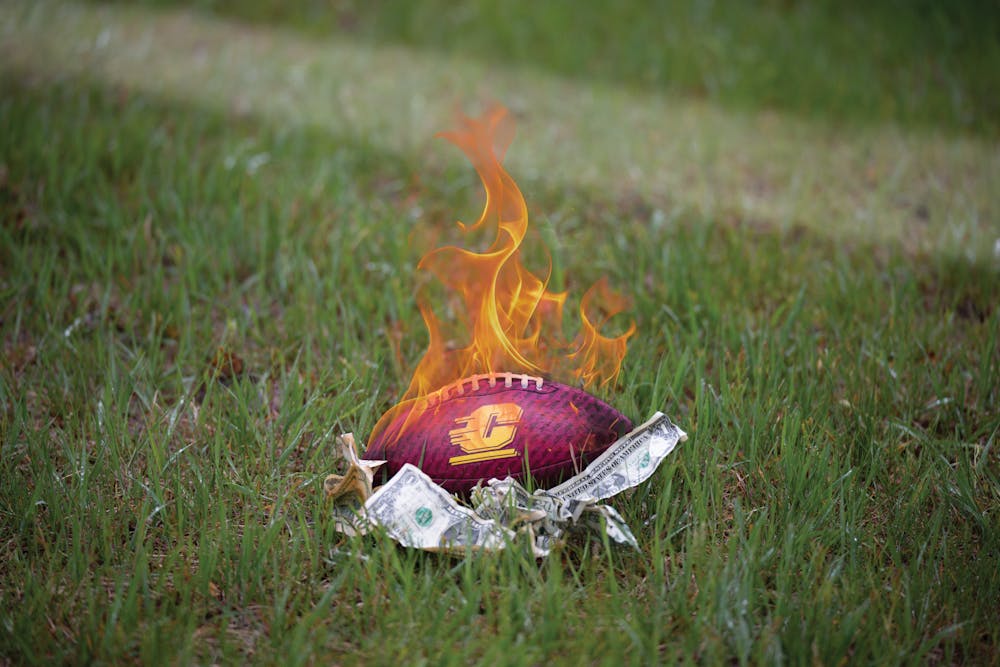Fired up! But at what cost?
A deep dive into CMU’s athletic budget
Despite the roaring crowds and thrilling game-day moments, Central Michigan University’s athletic program faces a financial reality that goes beyond the scoreboard.
With a $27.2 million budget covering expenditures for the 2024-25 fiscal year, CMU’s athletics department remains dependent on university subsidies to stay competitive.
While ticket sales, fundraising and game guarantees generate $7 million in revenue, they fall far short of covering expenses — leaving the university to provide over $20 million in financial support, according to the Operating Budget.
“The main thing to note is that this is a forecast,” physical education and sports professor Jennifer Sieszputowski said. “These aren’t the actual numbers…whoever does this each month will be comparing how it's matching up to what they forecasted.”

Related content: 'Past Deadline: About that athletics budget'
Budgetary nitty-gritty
A significant portion of the university general fund support is designated for athletic scholarships and debt service. The 2024-25 scholarship subsidy is set at around $7 million, funding around 232 total awards, including full and partial scholarships across different programs. However, not all student-athletes are on full scholarships.
The 2024-25 Operating Budget showed the highest expenses as followed:
Scholarships – $7,034,688
Football Expenses — $4,373,993
Debt Service for Athletic Facilities – $2,061,681
Men’s Basketball Expenses — $1,304,038
General Facilities & Maintenance – $1,055,597
On the revenue side, game guarantees were estimated to contribute approximately $1.7 million to the coffers this calendar year, the budget showed. This includes payments received for CMU’s participation in non-conference football games and other scheduled competitions.
Mid-American Conference distributions contributed about $1.8 million in 2024-25, according to the budget. This includes conference-related revenue sharing from T.V. deals, sponsorships and tournament distributions.
Lastly, ticket sales and athletic fundraising contributed revenues of $859,115 from ticket trade and $1.1 million from the Chippewa Club. These contributions from donors and ticket revenue help sustain athletic programs.
“Last year, game guarantees were at $3.3 million, but this year they’re only at $1.7 million,” Sieszputowski said. “That likely means CMU played fewer big-money games against major conference teams.”
In the landscape of the MAC, CMU ranks right in the middle out of the 12 team, yet still faces many of the same financial pressures as its peers. According to the most recent data in 2024 from the Knight-Newhouse College Athletics Database, the rankings are as followed:
Buffalo - $42.1 million
Miami (OH) - $40.6 million
Western Michigan - $40.4 million
Toledo - $38.7 million
Eastern Michigan - $37.2 million
Central Michigan - $36.6 million
Expenses on Knight Source are categorized differently than by the CMU operational budget.
So where does the rest of the money come from?
The remaining $20.1 million shortfall is covered by a direct subsidy from the university’s general fund, which is primarily fueled by student tuition and fees, along with state appropriations and miscellaneous university revenue streams. This subsidy, which has grown significantly over the past decade, makes CMU Athletics the single-most heavily subsidized non-academic department on campus.
“(The budget) is a combination of university subsidies and external revenue sources. Overall, our subsidy is approximately 4 % of the university’s budget, as it has been for a long time,” Amy Folan, the director of Athletics explained. “Like everyone at Central Michigan, we are trying to do more with less, but we focus on providing a premier student-athlete experience, exceptional fan experience and being leaders in the MAC.
Coaching buyouts
Further complicating the department’s finances this year is the recent departure of head men’s basketball coach Tony Barbee, who was fired after three seasons with a 49-75 overall record and 30-42 MAC record. Barbee had another year remaining on his contract, and his termination is expected to trigger a contractual buyout, as he had a contract salary of $346,794.
“Coach Barbee’s contract buyout is spread out over 12 months and includes an offset provision,” Folan said. “The maximum amount of his buyout is $300,000 but it would be reduced by any income he makes over the next year.”
The hiring of a new men’s basketball coaching staff brings another layer of financial commitment. While the base salary for the new head coach may be similar to Barbee’s, modern contracts often include a range of incentives, retention bonuses and buyout protections, all of which carry long-term budget implications.
“(Buyouts) are covered through department funds through reallocation,” Folan said. “The cost of bringing in a new staff is in line with all coaching staff transitions. It is within the range of our conference peers.”
In December, CMU named Matt Drinkall as the new head coach of the football program after the retirement of previous head coach Jim McElwain. Drinkall, who most recently served as an offensive line coach at Army, steps into a program that has struggled in recent years.
As of March 2025, the head football coach has a current contract salary of $415,000, while the men’s basketball head coach has a current contract salary of $346,794. Both were among the top 10 highest paid positions at CMU.
A decade of rising costs
The 2024-25 athletic budget continues a trend that’s been building for over a decade: rising expenses, stagnant revenues and an ever-growing reliance on institutional support.
In the 2016-2017 operating budget, CMU Athletics had a total budget of approximately $29.2 million, with about $22.4 million of that covered through university subsidy or student fees. That left the department responsible for generating around $6.7 million in its own revenue.
Fast forward nine years, and the budget has decreased by almost $2 million, while the projected revenue increased.
Athletic revenues, such as ticket sales, media deals and sponsorships have remained flat or declined. Bowl game revenues and postseason payouts, once a significant source of athletic department windfalls, have become increasingly rare amid performance struggles in football.
“CMU Athletics is a university unit and feels the same impact as all of our campus peers,” Folan explained. “We are always looking to be as efficient as possible with our resources and being able to maximize what we have in order to achieve championship-level success.”




